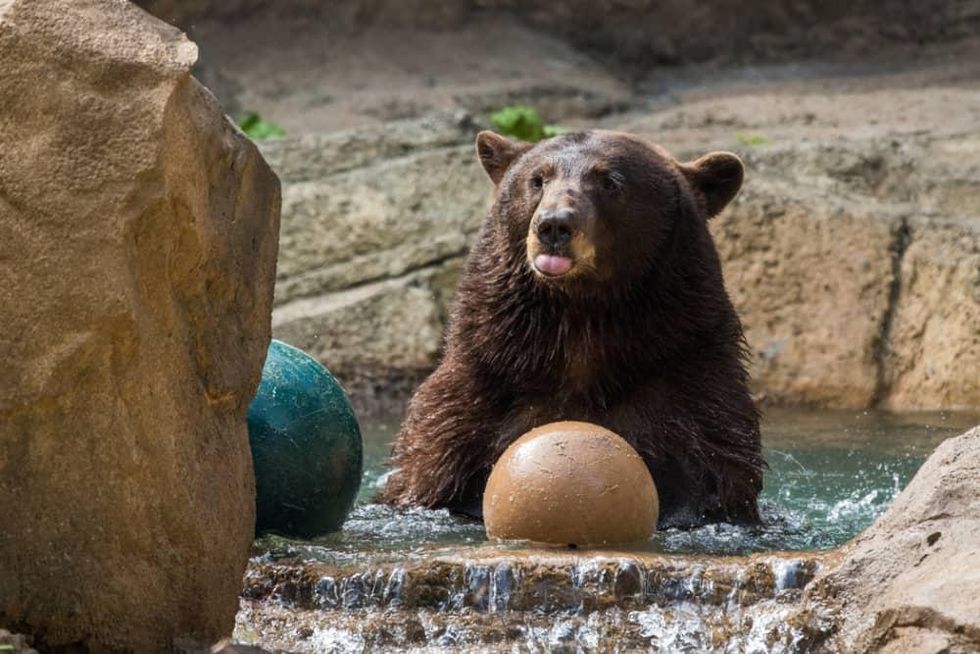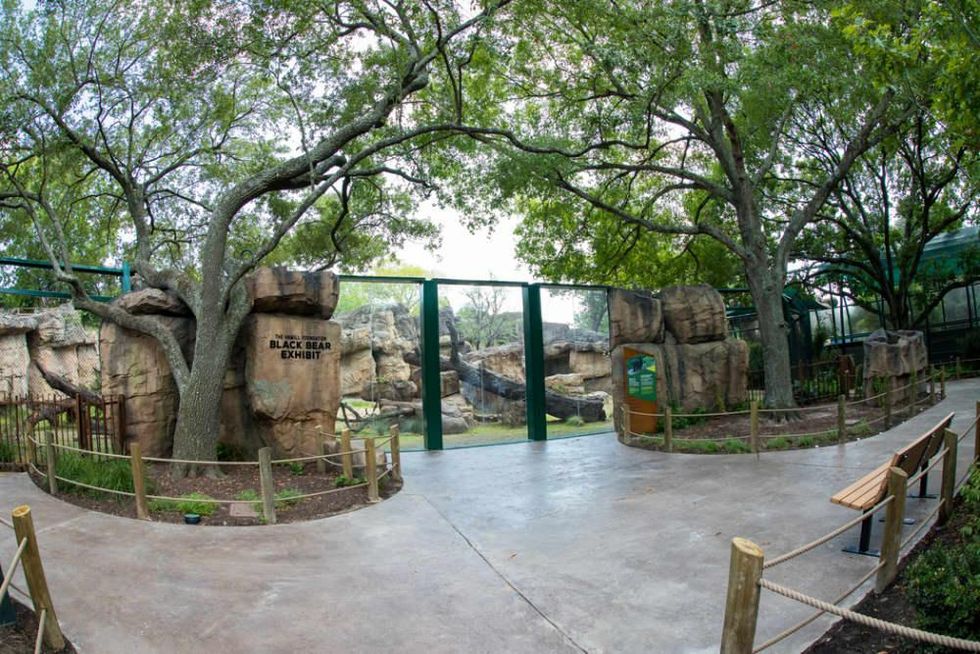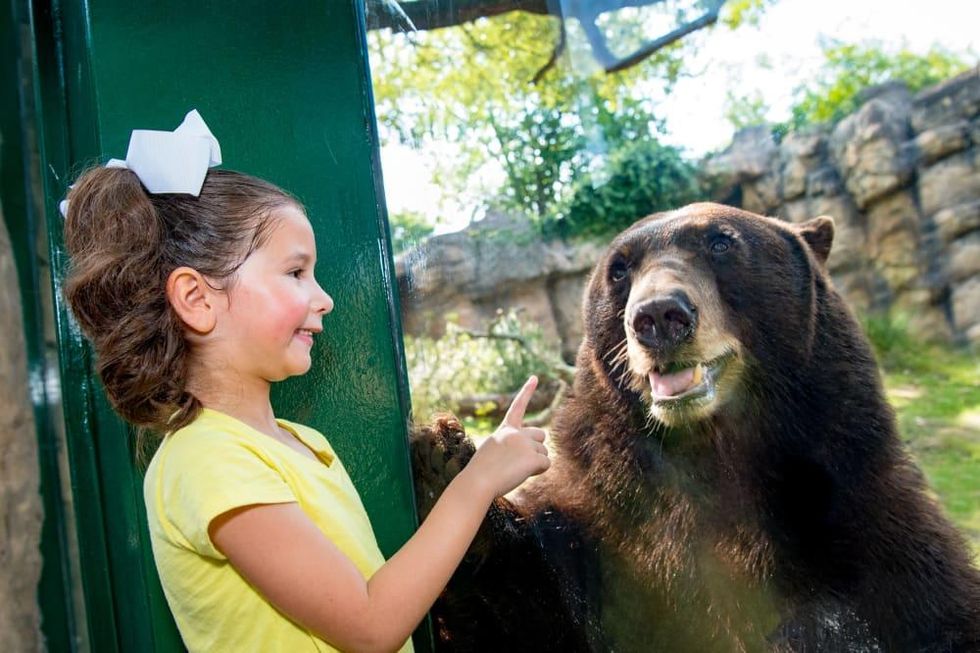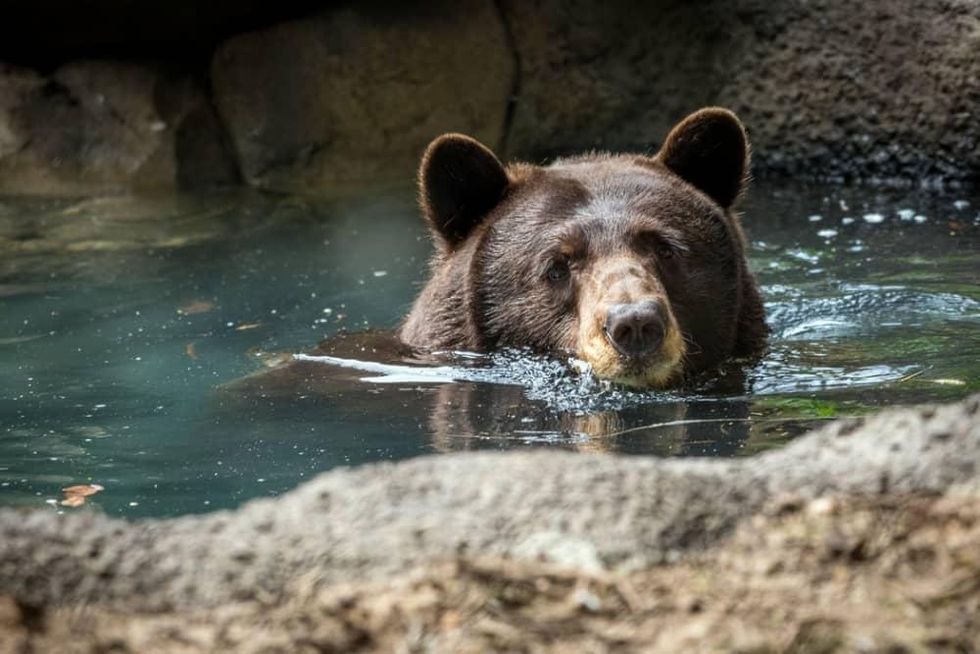See Them, Save Them
Houston Zoo's favorite wild pair get a spiffy new home thanks to generous donors
In late August, 5-year-old North American black bears Belle and Willow received a tremendous gift: a larger home. The Hamill Foundation Black Bear Exhibit more than tripled their living and play space at the Houston Zoo, while also providing the bears with upgraded components such as specially created climbing structures, a revamped water feature, and a brand-new glass wall so visitors can get nose-to-nose with the beloved duo.
This expanded habitat is the first project to be completed thanks to generous donor support from the zoo's Keeping Our World Wild centennial capital campaign.
It's also only a small part of what the Houston Zoo does to help protect and preserve animals in Texas and around the world. A portion of every ticket and membership sold goes directly to conservation projects and efforts, meaning that by visiting the animals at the zoo you're helping to save animals like toads in Houston, elephants in Borneo, and majestic lions in Africa.
To help save bears in the wild, the zoo participates in state protection planning in Texas and promotes paper reduction and the use of recycled paper products, even using recycled-content toilet paper in its restrooms. Why? Because bears need trees to live, and by using less paper or recycled-content paper products, fewer trees are cut down.
Belle and Willow came to the Houston Zoo in 2013 from California, where the orphaned cubs were being fed by patrons of a restaurant. U.S. Fish and Wildlife rescued them and asked the Houston Zoo if it could offer them a home, and the bears have been a popular part of the family ever since. Belle, the larger of the two, is often seen playing in the pool and rough-housing with Willow — when she's not napping, that is. The smaller Willow is the mastermind behind Belle's brawn and can often be seen working through her puzzle feeder.
Stop by the Houston Zoo to say hi to Belle and Willow, knowing that your contribution is helping them — and their counterparts in the wild.





